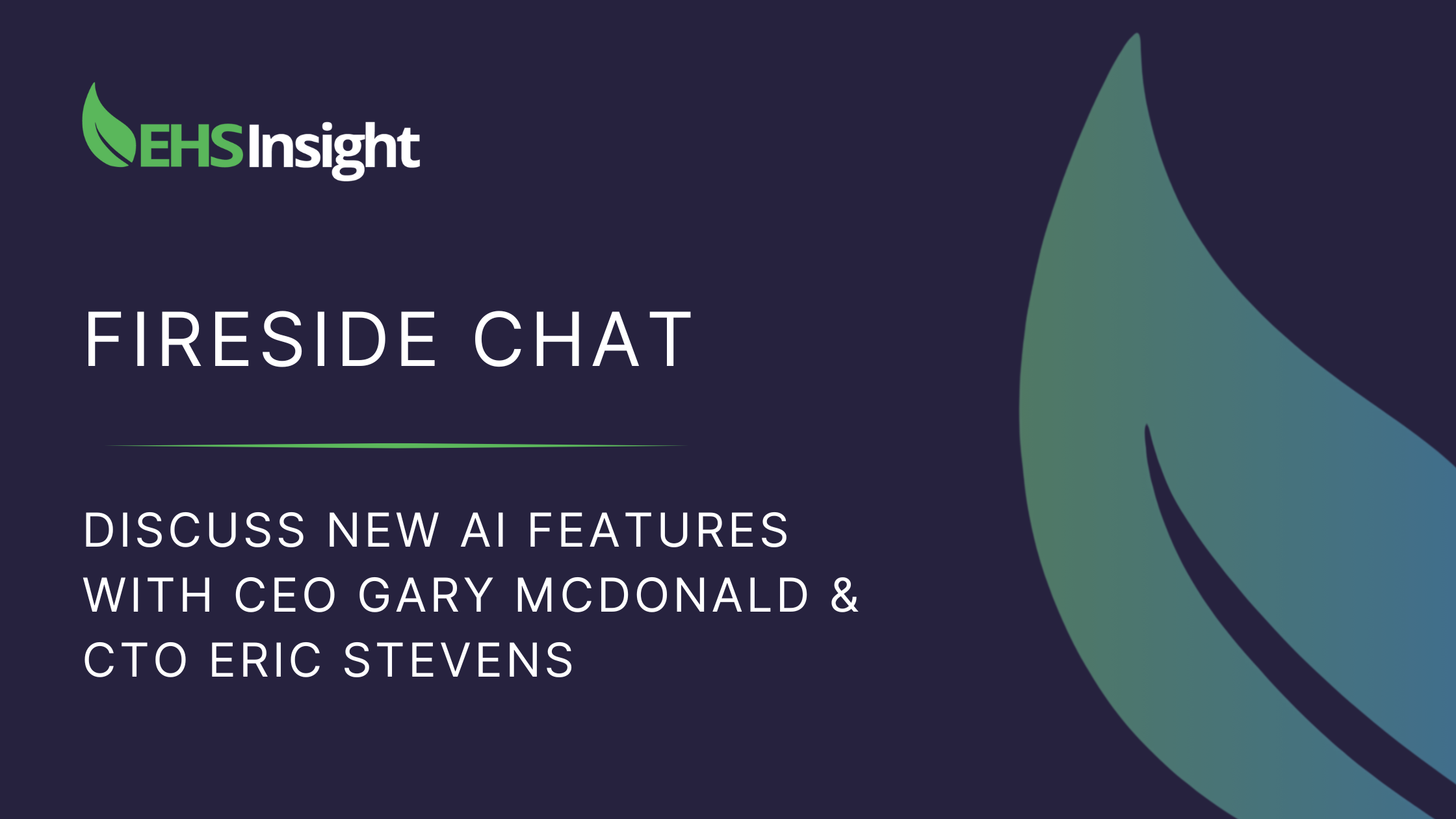In this fireside chat, Gary McDonald, Founder and CEO of EHS Insight, and Eric Stevens, Founder and CTO, share their journey of integrating artificial intelligence (AI) into the EHS Insight platform. They begin by addressing their core priority—ensuring that AI enhances functionality without compromising data security and privacy.
Pillars of AI Integration
AI Field-Level Suggestions
Eric Stevens introduces the initial AI integration focused on field-level suggestions. These features enhance data input accuracy and offer real-time, context-aware coaching for users. The AI supports users throughout their workflows, ensuring comprehensive and precise data.
AI-Powered Data Analysis
The next AI integration centers on analyzing data as it is created, allowing for real-time insights and actionable reporting. A key feature highlighted is the SIF precursor detection tool, which uses AI to prevent serious injuries and fatalities—a crucial advancement in EHS management.
Advanced BI Tools
Stevens then delves into the AI-powered business intelligence (BI) tools. These tools enable users to explore data through conversation, making it easier to spot trends, perform predictive analysis, and handle complex data manipulations without needing advanced technical expertise.
Competitive Advantage: AI Across the Entire Platform
Full Suite Integration
Gary McDonald highlights how EHS Insight’s comprehensive suite of EHS and ESG features, combined with AI, gives them a significant edge over competitors. Unlike companies offering limited AI functionalities, EHS Insight integrates AI across all its modules, providing a more complete and data-rich experience.
Continuous Innovation
Both leaders agree that staying ahead in the market requires continuous innovation. They emphasize the importance of keeping their AI features at the cutting edge, adapting as new advancements in machine learning and AI models become available.
Technical Insights: Customizable and Accurate AI
Fine-Tuning AI for Specific Needs
Eric Stevens delves into the technical specifics that set EHS Insight’s AI apart. He explains how customers can fine-tune AI suggestions to suit their industry needs, allowing for a personalized experience that enhances the relevance and effectiveness of the AI tools.
Advanced Mathematical Operations
Stevens also discusses their AI chatbot’s ability to handle complex mathematical operations, addressing a common shortfall in other LLM-based solutions. This feature empowers users to conduct precise data analysis without relying on external tools like Excel or Power BI.
Data Security: A Non-Negotiable Priority
Ring-Fencing Data
Throughout the chat, both Gary and Eric reiterate their commitment to data security. They explain how EHS Insight ensures that AI tools only access data authorized for specific users, maintaining strict privacy controls across different divisions and regions within a company.
Customer Control Over Data
Additionally, the leaders emphasize that customers’ data is never used to train third-party AI models. This ensures that EHS Insight’s AI tools remain secure and that customers retain control over their sensitive information.
The Future of AI in EHS and ESG Management
Evolving AI Models
Eric Stevens discusses the rapid evolution of AI models, noting that each advancement brings better understanding and application to EHS-specific contexts. EHS Insight’s layered approach to AI ensures that their tools continue to improve while remaining customizable for each client’s unique needs.
Impact on Businesses of All Sizes
Whether for small businesses needing AI to alleviate workload or large enterprises overwhelmed by data, EHS Insight’s AI features are designed to provide valuable insights and streamline processes for companies of any size.
Conclusion: A New Era of Efficiency
Gary McDonald closes the discussion by reflecting on how AI has come full circle. From gathering data to crunching numbers, AI now allows EHS professionals to focus on people and processes, leading to safer and more efficient workplaces. Both leaders encourage customers to embrace AI as a tool for continuous improvement while assuring them that they can adopt it at their own pace.

